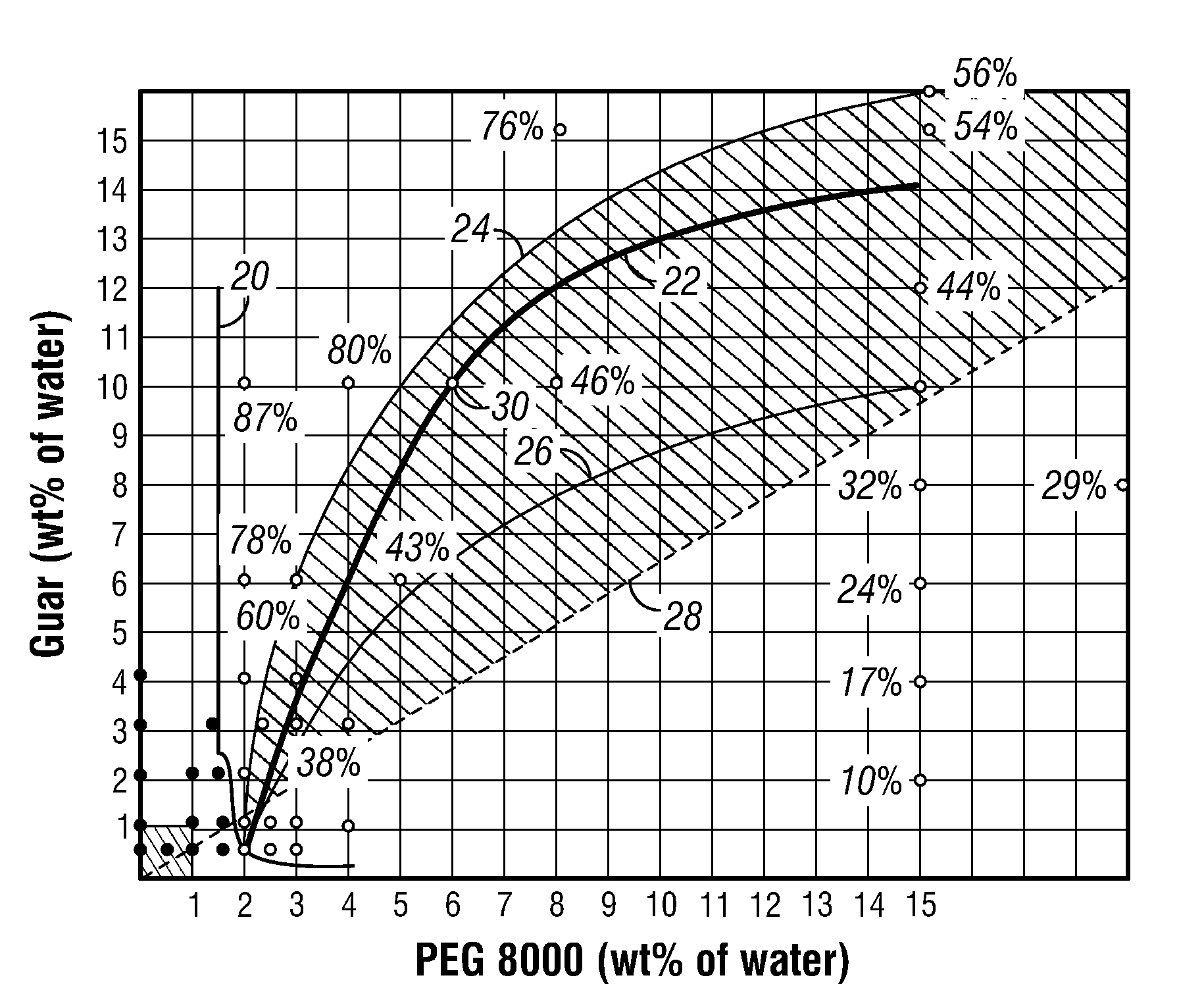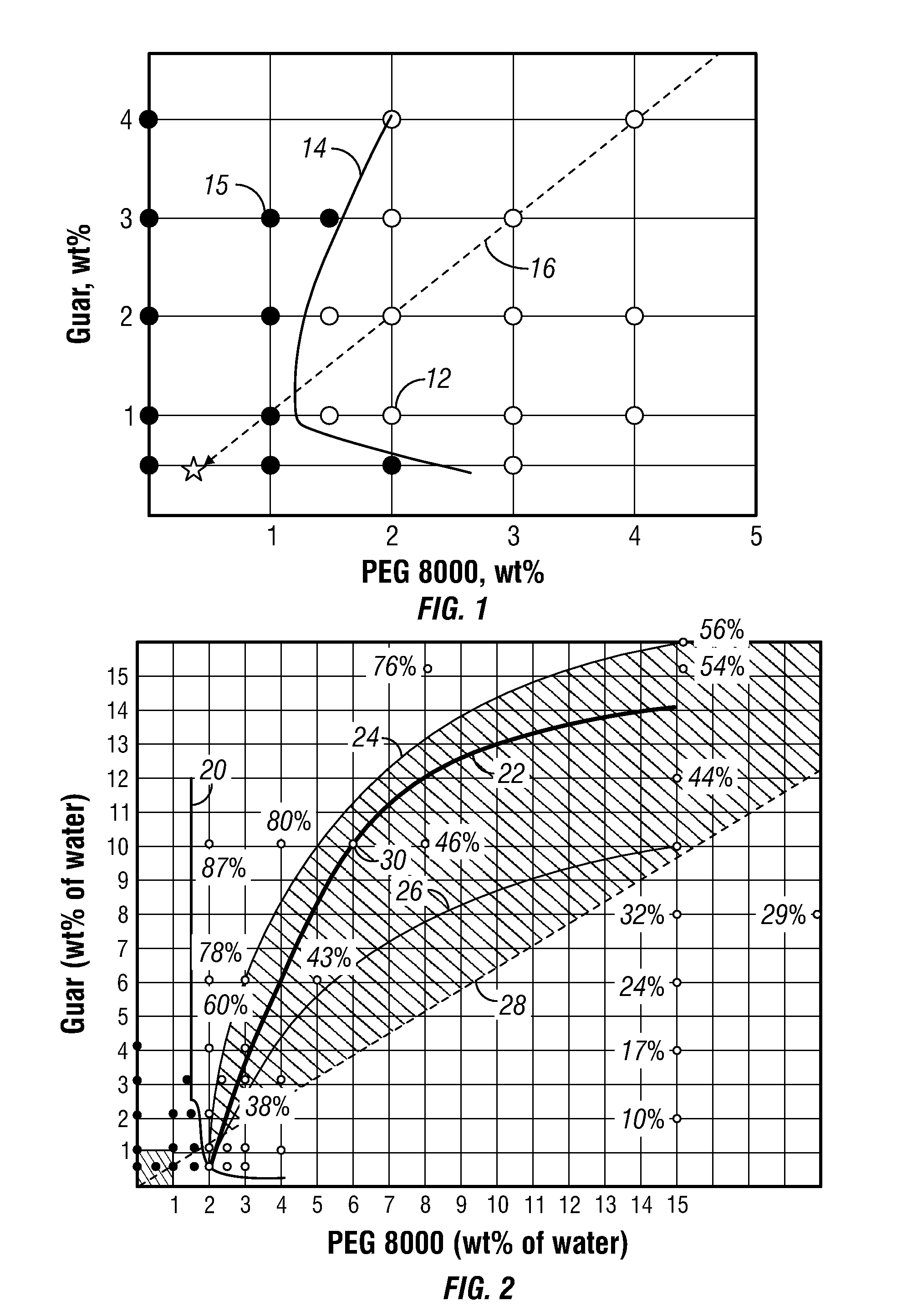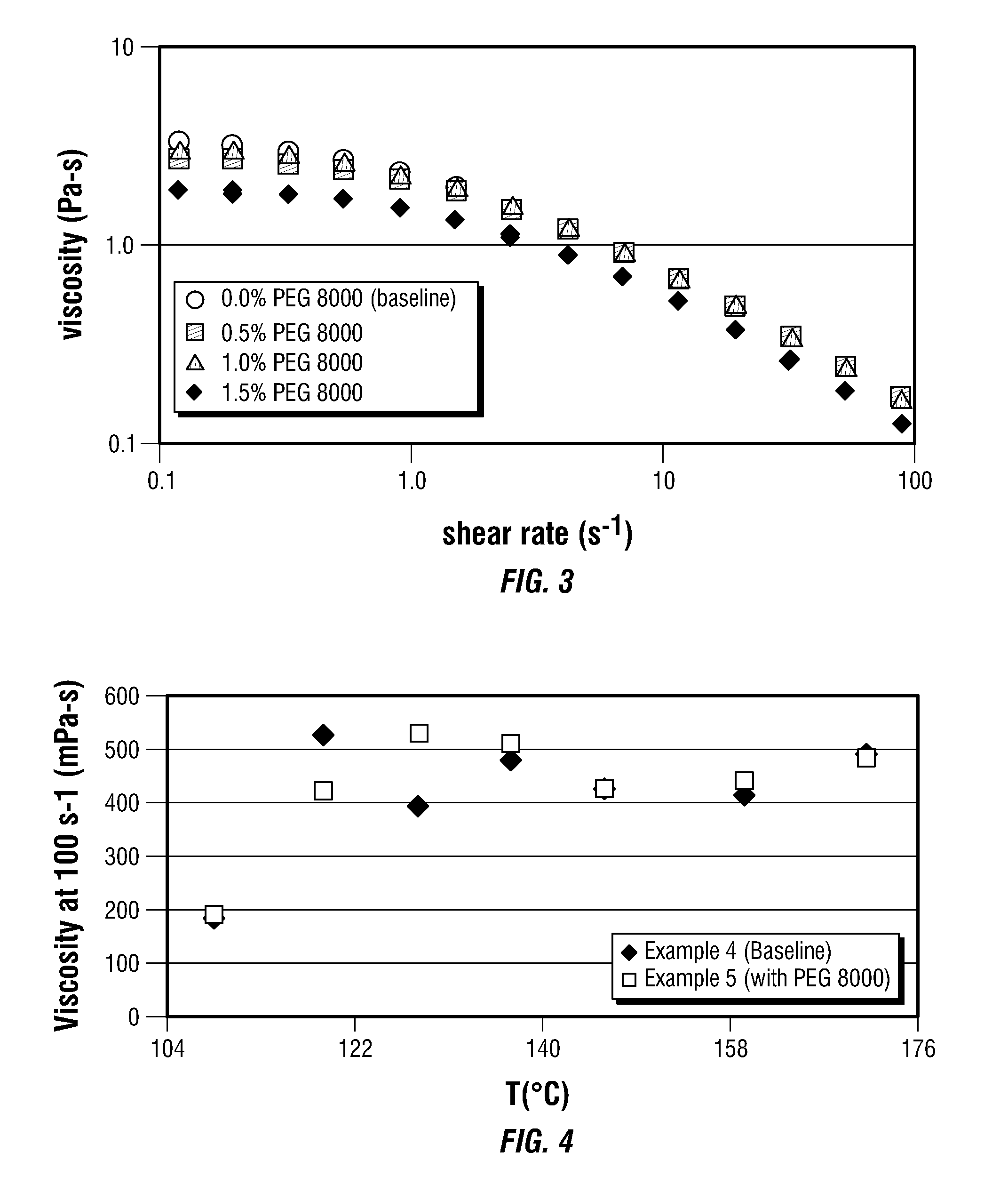Polymer Delivery In Well Treatment Applications
a well treatment and polymer technology, applied in the direction of transportation and packaging, well accessories, sealing/packing, etc., can solve the problems of high equipment and energy costs of this process, slow process for hydration of polymers in oilfield applications, and still not as fast as desired, so as to limit the solubility of a rheological agent, easy to pump, and low viscosity
- Summary
- Abstract
- Description
- Claims
- Application Information
AI Technical Summary
Benefits of technology
Problems solved by technology
Method used
Image
Examples
example 1
[0088]A low viscosity aqueous suspension of guar with PEG 8000 . A series of polymer solutions was created by dissolving 0-4 weight percent dry guar and 0-4 weight percent dry polyethylene glycol (PEG 8000 ) in deionized (DI) water. In each case, 200 ml of DI water were used, and the polymers were measured as dry powders with percentages expressed on a total fluid weight basis. For each sample, the dry polymers were mixed together and then added together into the DI water while stirring vigorously in a WARING blender. Each sample was stirred rapidly in the blender for a minimum of one hour. After this stirring process, each sample was visually inspected for evidence of phase separation. Samples were monitored for a period of at least 24 hours to check for phase separation. The results were plotted in FIG. 1 using filled circles 10 to indicate no phase separation and open circles 12 to indicate the occurrence of phase separation.
[0089]The low-viscosity concentrates 12 fell within the...
example 2
[0092]Welisite guar delivery system using low viscosity aqueous suspension. FIG. 2 provides a phase diagram for a high molecular weight guar routinely used for wellbore treatment fluids. As in the phase diagram of FIG. 1, the guar in this example was again phase separated with PEG 8000. Line 20 on the phase diagram indicates the binodal for phase separation, with compositions to the upper-right of line 20 being low viscosity two-phase solutions of the two polymers in water. Line 22 in the two-phase region indicates the line of compositions having 50 / 50 phase volume upon phase separation; line 24 a 60 / 40 phase volume of guar:PEG 8000; and line 26 a 40 / 60 phase volume of guar:PEG 8000. The percentages beside some of the points are the volume percent of the separated guar phase at equilibrium. Below-right with respect to the line 24 (60 / 40 guar:PEG 8000) represents readily pourable compositions; compositions above 60 to about 80 volume percent guar phase are borderline pumpable, genera...
example 3
[0095]Effect of diluted PEG 8000 on viscosity of linear gels. FIG. 3 shows the rheology of 0.5 wt % guar solutions with and without addition of PEG 8000, in terms of apparent viscosity versus shear rate. Concentrations of PEG 8000 less than approximately 1 wt % do not measurably alter the rheology of 0.5 wt % guar solutions. Specifically, the data shown in FIG. 3 illustrate that addition of PEG 8000 to a 0.5% guar solution (40 lbs / 1000 gallons) has negligible impact on the guar solution rheology for PEG 8000 concentrations up to at least 1 wt %. This is a critical, unexpected result, that a phase-separated, low viscosity concentrate can be used to deliver guar as a treatment fluid, without sacrificing the performance of the guar fluid thus made when the dilution is performed to create a final fluid composition within the area 32 from zero to 1% for both guar and PEG concentration in FIG. 2.
PUM
| Property | Measurement | Unit |
|---|---|---|
| temperature | aaaaa | aaaaa |
| temperature | aaaaa | aaaaa |
| volume percent | aaaaa | aaaaa |
Abstract
Description
Claims
Application Information
 Login to View More
Login to View More - R&D
- Intellectual Property
- Life Sciences
- Materials
- Tech Scout
- Unparalleled Data Quality
- Higher Quality Content
- 60% Fewer Hallucinations
Browse by: Latest US Patents, China's latest patents, Technical Efficacy Thesaurus, Application Domain, Technology Topic, Popular Technical Reports.
© 2025 PatSnap. All rights reserved.Legal|Privacy policy|Modern Slavery Act Transparency Statement|Sitemap|About US| Contact US: help@patsnap.com



